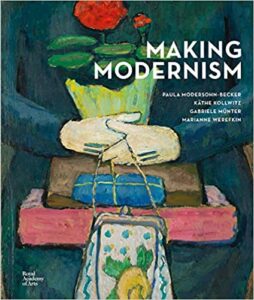-

R720In the 1920s Germany was in the grip of social and political turmoil: its citizens were disillusioned by defeat in World War I, the failure of revolution, the disintegration of their social system, and inflation of rampant proportions. Curiously, as this important book shows, these years of upheaval were also a time of creative ferment and innovative accomplishment in literature, theater, film, and art.
-

R625Käthe Kollwitz (1867–1945), Paula Modersohn-Becker (1876–1907), Gabriele Münter (1877–1962) and Marianne Werefkin (1860–1938) are among the exceptional artists associated with the emergence of Expressionism in Germany in the early decades of the 20th century. Each challenged prevailing ideals of feminine identity at a time of great societal change. As women, they were expected to marry and raise a family; some chose to, some did not. As ambitious artists, they wanted to work.
As they rose to these challenges, their art further undermined conventions. Their portraits of children symbolize joy, hope and innocence but also melancholy, tension, curiosity, the passing of time and unfulfilled desire. Their radical depictions of the nude wrest the female body away from the male gaze toward a newfound role, expressive of powerful maternity and female subjectivity.
-

R600“Grand Scale” brings to light rare surviving examples of mural-size prints – a Renaissance art form nearly lost from historical record.
-

R300The Euro crisis has served as a stark reminder of the fundamental importance of Germany to the larger European project. But the image of Germany as the dominant power in Europe is at odds with much of its recent history.




